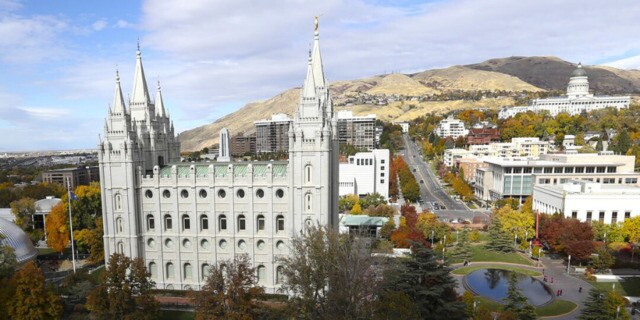Last week, Deseret News and Church News interviewed the Presiding Bishopric of The Church of Jesus Christ of Latter-day Saints. The interview gave insights into the Church's financial operations.
“It’s no surprise we are talking about billions of dollars,” Bishop Gérald Caussé, Presiding Bishop, told Deseret News. “Nobody should be surprised, given the number of members, millions of members, 16 million members in so many countries. This is a Church that has become quite large, and so there’s a large budget, and we are grateful for that because that’s an opportunity to expand the reach of all the good that the Church can do around the world.”
Finances help the Church in its mission to care for the poor, to spread the gospel of Jesus Christ around the world, to strengthen the spiritual foundation of its members, and to live the principles of self-reliance.
Here are 19 facts we learned from the interview.
Where Investment Money Goes
- Each year, the Church transfers surplus tithing to its investment arm, Ensign Peak Advisors, to save for a rainy day.
- Some of the money is invested in US equities, or stocks and bonds. Previous filings with the Securities and Exchange Commission have shown that Ensign Peak's various funds hold stock in companies such as Apple, Home Depot, and Alphabet.
- In addition to the reserves, investments are made in real property: commercial real estate, residential real estate, and agriculture.
Humanitarian and Welfare Needs
- The Church has doubled its humanitarian spending over the past five years.
- $1 billion annually is provided by the Church for humanitarian and welfare aid.
- The Church operates 27 wheat storage facilities.
- Nine refugee resettlement agencies in the United States are funded by the Church.
- More than 100 bishops’ storehouses full of food and commodities are operated by the Church and help members globally.
- When determining ways to reach out, the Church looks for ways that would bless the giver and the receiver. They not only look for humanitarian projects but also opportunities for members to serve.
Other Areas of Spending
- Temples: The Church has 168 operating temples, with 49 additional temples announced or under construction. Operating temples require funds for maintenance and daily operation, and additional temples require funds for construction.
- Missionary Work: The Church funds 399 missions as well as the travel and health care expenses of 67,695 missionaries.
- Higher Education: The Church’s five universities and colleges, which educate 90,000 students, operate at a cost of $1.5 billion a year paid for by tuition and tithing.
- Religious Education: Seminaries and Institutes of Religion provide religious education through 50,000 teachers to more than 800,000 teens and college students around the world.
- Family History Work: The Church allocates resources to obtain and produce searchable records.
The Policies Behind Finances
- In the economic downturn of 2008, the Church froze budgets and hiring. The only budget item that increased in that period was humanitarian and welfare spending, because church leaders knew more people would need help.
- The Church has not released financial reports since 1959 when it ran a deficit.
- In the 1970s, financial policies were established such as never spending more than it takes in and setting aside some money in a reserve fund each year.
- Part of the policy includes establishing annual budgets based on expected revenues while setting aside funds for the future.
- Two committees oversee the finances of the Church:
- • The Investment Policy Committee is composed of the First Presidency, a member of the Quorum of the Twelve Apostles, and members of the Presiding Bishopric.
- • The Investment Executive Committee includes the Presiding Bishopric and managing directors over Church investments. This Committee reviews and prepares recommendations to be taken to the Investment Policy Committee.
READ MORE AT Deseret News and Church News.


